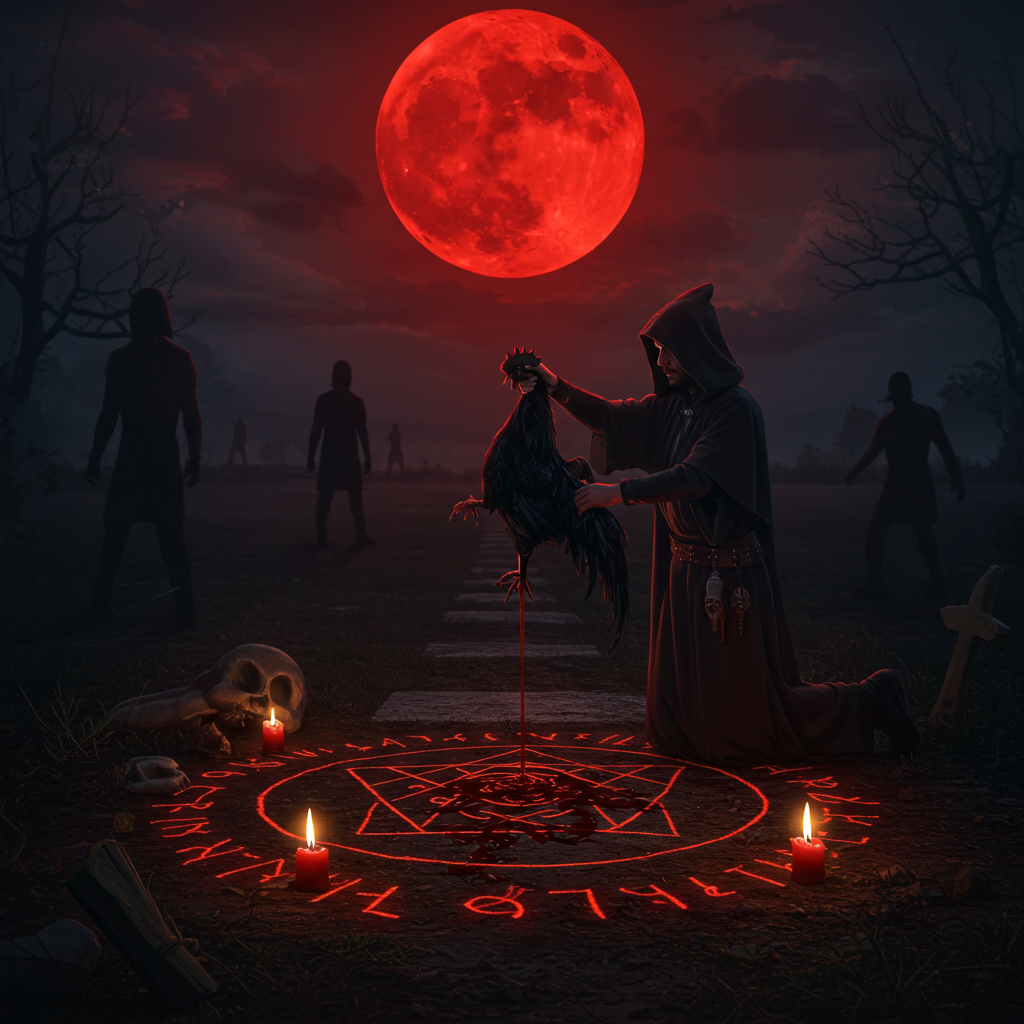According to European folk magic traditions, sacrificing a black rooster and using its blood in specific rituals could break powerful curses and neutralize malevolent spells. The ritual typically required the blood to be collected at midnight or dawn, then used to draw protective symbols or sprinkled at the four corners of a cursed property. In some traditions, the rooster needed to be killed at a crossroads or cemetery to maximize the ritual’s power. The blood itself was believed to have potent purifying and counter-magical properties, capable of neutralizing spiritual contamination or magical attack.

A baby’s future career or fate is predicted by the first object they select during a ceremonial setup.
In several Asian and Eastern European cultures, a traditional ceremony is held for babies usually around their first birthday. Known


